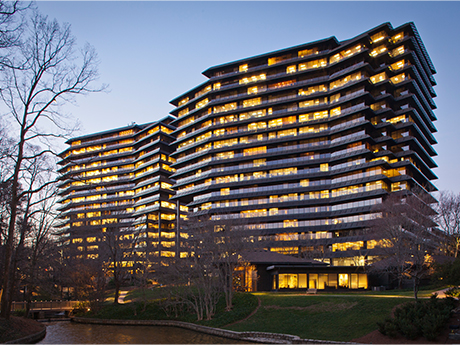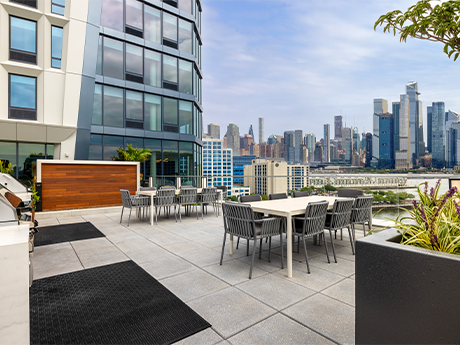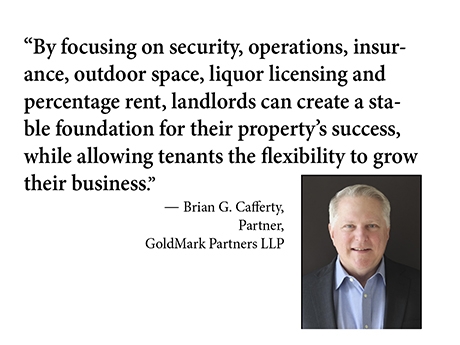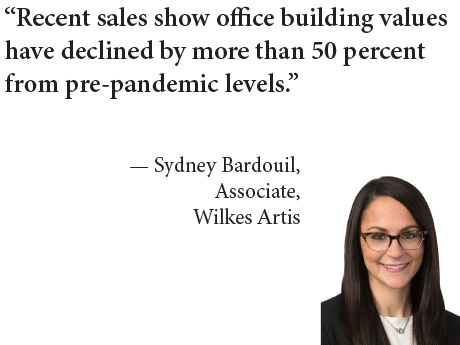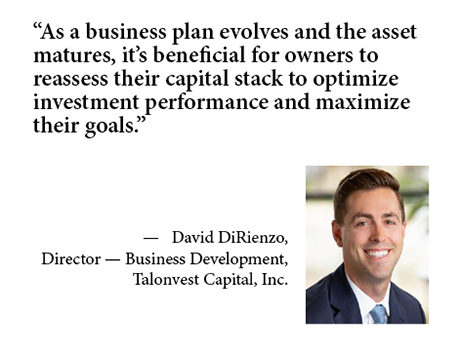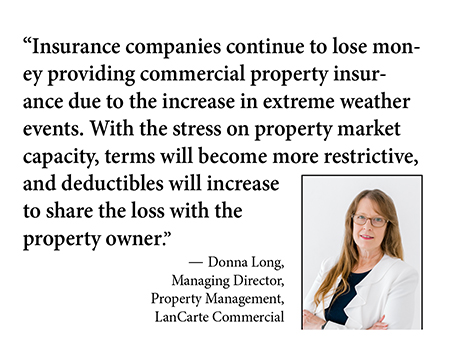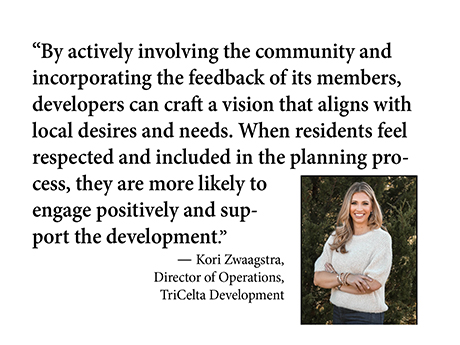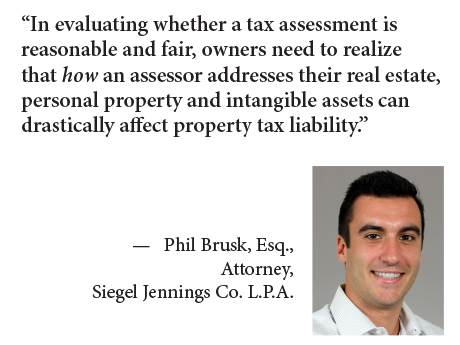LONDON — The U.S. office market is in need of time and sustained levels of leasing activity to overcome the robust amount of space given back since the COVID-19 pandemic, concludes Savills’ third-quarter “State of the U.S. Office Market” report. If the third quarter is any indication, the U.S. office market is beginning its long road to recovery. According to Savills, the market recorded 57.7 million square feet of leasing activity this past quarter, which is a nearly 19 percent increase from 48.6 million square feet in second-quarter 2024 and a 25.4 percent increase from 46 million square feet in third-quarter 2023. The third-quarter 2024 total represents the largest quarterly leasing volume since the pandemic, according to Savills. The firm also projects that this year is on track to have the most office leasing activity since 2019, surpassing the previous post-pandemic high of 205.8 million square feet recorded in 2022. Additionally, the amount of available sublease space is on the decline. Sublease space on the market totaled 164.7 million square feet at the end of the third quarter, a 6.6 percent decrease from 176.4 million square feet in third-quarter 2023. Savills reports that sublease availability has declined for four consecutive quarters. …
Features
Amenities are the personality of a multifamily property. They proclaim a community’s individuality and lure tenants with promises of a fun, relaxing or convenient lifestyle. What counts as a multifamily amenity today? If most renters and homeowners are accustomed to robust Wi-Fi or controlling their heating and air conditioning through their phones, is a smart thermostat or bulk internet something to advertise as an “extra,” or are these features a given nowadays, like a fridge or a microwave? “Want versus need is a spectrum when it comes to multifamily amenities,” says Meg Spriggs, managing director of development, Americas, with New York City-based Lendlease. “The amenities renters need do not necessarily have the same wow factor as those they may want. In fact, you can’t even see some of them, such as fast and reliable internet service. Fitness centers, package systems, dog runs and electric vehicle (EV) charging stations are other check-the-box items that, in some cases, are non-negotiables,” says Spriggs. Wi-Fi and EV outlets may be essentials, but they’re not always clinchers for prospective renters on the fence about where to live. This is when the wow factor takes over. Recording studios, on-site beekeeping, private speakeasies, meditation pods, maker spaces, …
By Brian G. Cafferty, partner at GoldMark Partners LLP A popular restaurant can be a significant draw to a shopping center. However, according to a study published by Ohio State University, approximately 60 percent of restaurants fail in their first year, and 80 percent fail before the end of their fifth year. These statistics underscore the importance of landlords being protected in the likely event of a restaurant tenant’s failure. A well-crafted restaurant lease should address the following key items to minimize a landlord’s liability: Secure More Than Just Rent To protect the landlord’s investment and minimize potential losses, the landlord should secure a security deposit of at least two months rent. Additionally, the tenant should grant the landlord a security interest in all of the tenant’s accounts receivables, equipment (including machinery, furniture and trade fixtures) and inventory under the Uniform Commercial Code (UCC). Keeping the Kitchen (and Lease) Running Clean The lease should require the tenant to contract with a third party for essential maintenance tasks, including grease removal, pest control and regular vent and hood cleaning. The frequency of the hood cleaning will depend on the type of restaurant, but quarterly cleaning is a good rule of …
FeaturesHeartland Feature ArchiveMultifamily & Affordable Housing Feature ArchiveNortheast Feature ArchiveSoutheast Feature ArchiveTexas & Oklahoma Feature ArchiveWestern Feature Archive
Forecast Survey: What’s Your Take on Commercial Real Estate in 2025?
by John Nelson
The editors of REBusinessOnline.com are conducting a brief online survey to gauge market conditions in 2025, and we welcome your participation. The survey should only take a few minutes to complete. Questions range from property sectors that you are most bullish on heading into 2025 to trends in deal volume to your outlook for interest rates. The results of our 14th annual survey will be compiled and published in the January issues of our regional magazines. Conducting these surveys is part of our mission at France Media to provide readers with indispensable information, and we couldn’t do it without your help. To participate in our broker/agent survey, click here. To participate in our developer/owner/manager survey, click here. To participate in our lender/financial intermediary survey, click here. (Note: Please remember to click on “done” to properly submit the survey.)
Commercial property owners in the District of Columbia are crawling out of a post-pandemic fog and into a new, harsh reality where office building values have plummeted, but property tax assessments remain perplexingly high. Realization comes slowly Immediately following the pandemic, many office property owners adopted a wait-and-see attitude toward the volatility permeating the sector, clinging to hopes that the rising popularity of remote work and similar office worker practices would prove temporary. Once the Federal Reserve began raising interest rates to combat generational inflation in 2022, however, hopes for a “return to normal” vanished and a grim reality set in. Recent transactions involving office properties in the District clearly indicate that investors recognize the negative impact these market forces have exerted on office building valuations and are now pricing those changes into the amounts they are willing to bid for acquisitions. These recent sales show office building values have declined by more than 50 percent from pre-pandemic levels. The other shoe began to drop on office market pricing in early 2023 with a rise in distress transactions, in which the office owner sells or forfeits the property to resolve some form of trouble, typically financial. These turnovers in ownership …
By David DiRienzo, director — business development, at Talonvest Capital, Inc. This is part one of a two-part series discussing the key drivers behind transaction volume and the steps owners can take to ensure they are well-positioned going forward. Much has been written about the decline in transaction volumes over the last 24 months. There is no question that properties are changing hands at a slower pace compared to the activity seen during the low interest rate environment that prevailed during the pandemic. Even so, many investors continue to seek out financing to address a variety of circumstances. In today’s market, beyond simply refinancing due to an upcoming loan maturity, three scenarios have been driving financing activity among owners of self-storage, multifamily and industrial assets: restructuring debt as a project evolves, elective refinancing to improve performance and capitalizing on a new business plan. We will cover the first theme below in part one of this two-part series. Business Plan Progression Offers Opportunities for Owners to Unlock Value As a business plan evolves and the asset matures, it’s beneficial for owners to reassess their capital stack to optimize investment performance and maximize their goals. Completing a refinance at a natural project inflection …
By Donna Long, managing director, property management, LanCarte Commercial The role of property managers is to safeguard and enhance the value of our clients’ assets. And in today’s evolving landscape, commercial property managers navigate challenges such as extreme weather events, rising insurance costs, regulatory changes and environmental sustainability. Addressing these challenges effectively requires a proactive, quality-focused approach to ensure smooth operations and long-term profitability. Extreme weather events — hurricanes, floods, tornadoes — are more frequent and severe than ever before. They pose increasingly significant risks to commercial properties, requiring greater expertise in risk management strategies. Weather-related or other destructive events can lead to significant business interruptions, so property managers play a vital role in developing and implementing effective emergency response plans that align with insurance requirements and expectations. These plans include: Having a network of trusted contractors, structural engineers and other service providers on standby is essential for rapid repair response and minimized operational interruptions. Strong relationships with local emergency services and disaster response teams allow for quicker deployment of resources and support during a crisis. Effective communication with all stakeholders — tenants, property owners, emergency responders — ensures that everyone is informed, expectations are managed and appropriate actions are being taken. After …
By Kori Zwaagstra, director of operations, TriCelta Development As the commercial real estate market continues to evolve in unexpected ways, the key to making a project truly impactful lies in strong community involvement from the beginning. With shifting trends and economic ups and downs, developers benefit from listening to the people who will be most affected. By working closely with residents, city officials and underrepresented groups, developers can create projects that feel more connected, sustainable and widely accepted. This approach not only streamlines the development process but also preserves projects’ relevance and adaptability to market changes — all while keeping the community’s needs front and center. Understanding Stakeholders’ Impacts Stakeholders are more than people with financial interests in a project — they also include the end-users who will experience the space firsthand. These are the individuals who will live, work and interact with the development daily, and their perspectives impact the project’s success. Prioritizing community needs and incorporating feedback ensures that the project aligns with expectations. The goal is to create a development that benefits both investors and the community, achieving a balance that enriches the lives of everyone involved. While immediate financial gains and the needs of primary owners …
FeaturesHeartland Feature ArchiveIllinoisMidwestNortheastNortheast Feature ArchiveOhioPennsylvaniaSeniors Housing
Dual Appraisal Methods Improve Opportunities to Get Fair Taxation for Seniors Housing Properties
by John Nelson
By Phil Brusk and Caleb Vahcic of Siegel Jennings Co. L.P.A. The seniors housing sector can’t seem to catch a break. Owners grappling with staffing shortages and other operational hardships lingering from the pandemic are facing new challenges related to debt and spiraling costs. High interest rates and loan maturations loom over the industry, with $19 billion in loans coming due within the next 24 months, according to Cushman & Wakefield’s “H1 2024 Market Trends and Investor Survey” on senior living and care. Factors driving high costs include wage pressures, inflation and — incredibly — rising property taxes. Despite operational challenges and declining occupancy at many facilities during the COVID-19 pandemic, property tax relief for seniors housing was mixed. Many assessors resisted downward adjustments to taxable values, maintaining that recovery was around the corner. Now, seniors housing operators face property tax assessments that equal or exceed pre-pandemic levels. As in the hospitality sector, most seniors housing owners understand that their operating properties include more value components than real property alone. In evaluating whether a tax assessment is reasonable and fair, however, owners need to realize that how an assessor addresses their real estate, personal property and intangible assets can drastically …
Affordable HousingBuild-to-RentCivicData CentersFeaturesHealthcareHospitalityIndustrialLife SciencesMixed-UseMultifamilyNet LeaseNevadaOfficeRestaurantRetailSelf-StorageSeniors HousingSingle-Family RentalStudent HousingWesternWestern Feature Archive
Emerging Trends Report Predicts Rebound in Transaction Volume in 2025 as Capital Markets Are ‘Poised for Recovery’
by John Nelson
LAS VEGAS — At the September meeting of the Federal Open Market Committee (FOMC), the Federal Reserve lowered the federal funds rate by 50 basis points, which is the first easing of monetary policy in four years. This move lowered the short-term interest rate to a target range of 4.75 to 5 percent. Elevated borrowing costs have stifled commercial real estate transaction volumes the past couple years as buyers and sellers found that values were a moving target. Now with a reduction in interest rates, many real estate professionals expect transaction volume to rebound at least moderately. “In 2025, we expect lower interest rates will reduce borrowing costs, aid in price discovery and ultimately encourage an uptick in [commercial real estate] transactions,” said Angela Cain, global CEO of the Urban Land Institute (ULI). Cain’s comments came in a prepared statement to summarize the findings of Emerging Trends in Real Estate 2025, an annual report jointly produced by PwC US and ULI. The report was published in conjunction with ULI’s Fall Meeting, which is taking place this week at Resort World Las Vegas. Cain said that the real estate professionals surveyed for the report relayed that sentiment is improving, though many remain cautious. …


